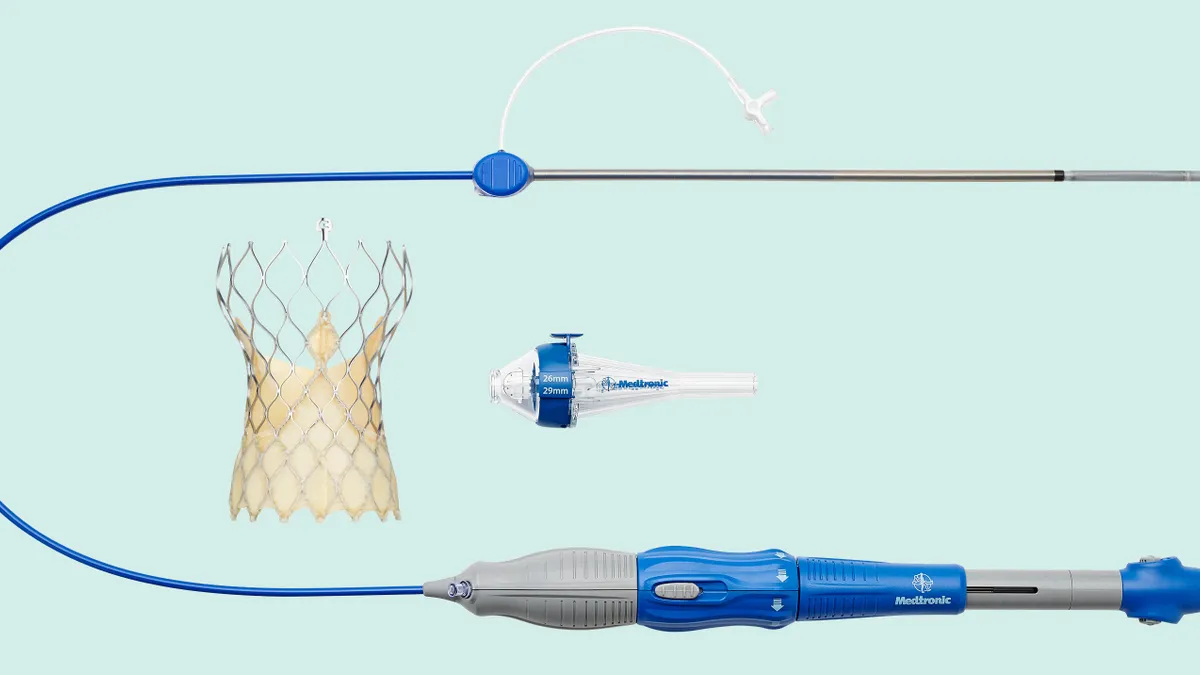Dive Brief:
- Medtronic has shown the survival and stroke benefits of transcatheter aortic valve replacement (TAVR) over the older surgical approach persist for up to three years in low-risk patients.
- Writing in the Journal of the American College of Cardiology, researchers revealed that the rate of all-cause mortality or disabling stroke at three years was 7.4% in recipients of the Evolut TAVR device, compared to 10.4% in patients who underwent surgical aortic valve replacement (SAVR).
- The results support the durability of Evolut in low-risk aortic stenosis patients, the population that Medtronic and its rival Edwards Lifesciences have targeted to expand the TAVR market.
Dive Insight:
Medtronic’s clinical trial randomized 1,414 patients with severe aortic stenosis and a less than 3% risk of death from SAVR to undergo either transcatheter or surgical treatment from 2016 to 2019. The team now has three-year data on more than 90% of the original participants in the study.
The three-year analysis shows the numerical difference between the TAVR and SAVR groups in outcomes on the primary endpoint has persisted, although it again fell short of statistical significance. The delta between the two cohorts increased from 2.0% at the two-year analysis, when the rates of all-cause mortality in the TAVR and SAVR arms were respectively 4.3% and 6.3%, to 2.9% in the latest analysis.
The data support Medtronic’s push to expand use of its Evolut TAVR product into the low-risk population, Nina Goodheart, president of Medtronic’s structural heart and aortic business, said in a statement.
“The results of the Evolut Low Risk Trial are an important milestone for our TAVR platform. These data add to the robust body of evidence demonstrating that the Evolut platform offers excellent valve performance and remains hemodynamically stable for years to come in younger, healthier patients,” Goodheart said.
Medtronic also reported a significant improvement in valve hemodynamics. The mean gradient in the TAVR group after three years was 9.1mmHg, compared to 12.1mmHg in the surgery cohort. A mean gradient of 401mmHg and higher is part of the definition of severe aortic stenosis. The rate of moderate or greater prosthesis-patient mismatch, which happens when the valve is too small, was lower in the TAVR group.
SAVR continues to have an advantage over Medtronic’s Evolut in two areas. The incidence of three-year mild paravalvular regurgitation was 20.3% in the TAVR group, compared to 2.5% in the surgical cohort, and pacemaker placement was higher in the Evolut arm, at 23.2%, than the SAVR group, at 9.1%.













